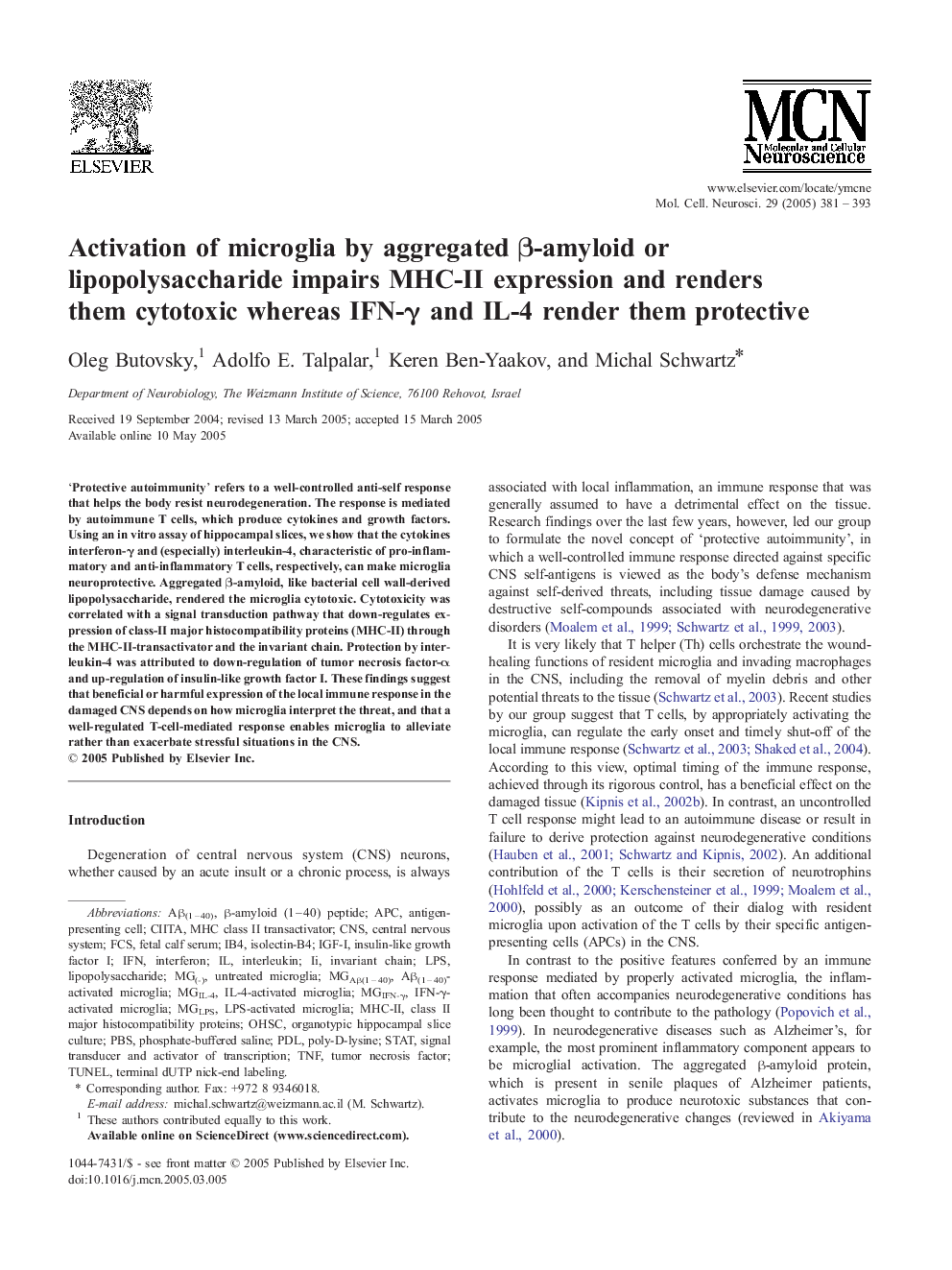| Article ID | Journal | Published Year | Pages | File Type |
|---|---|---|---|---|
| 10956888 | Molecular and Cellular Neuroscience | 2005 | 13 Pages |
Abstract
'Protective autoimmunity' refers to a well-controlled anti-self response that helps the body resist neurodegeneration. The response is mediated by autoimmune T cells, which produce cytokines and growth factors. Using an in vitro assay of hippocampal slices, we show that the cytokines interferon-γ and (especially) interleukin-4, characteristic of pro-inflammatory and anti-inflammatory T cells, respectively, can make microglia neuroprotective. Aggregated β-amyloid, like bacterial cell wall-derived lipopolysaccharide, rendered the microglia cytotoxic. Cytotoxicity was correlated with a signal transduction pathway that down-regulates expression of class-II major histocompatibility proteins (MHC-II) through the MHC-II-transactivator and the invariant chain. Protection by interleukin-4 was attributed to down-regulation of tumor necrosis factor-α and up-regulation of insulin-like growth factor I. These findings suggest that beneficial or harmful expression of the local immune response in the damaged CNS depends on how microglia interpret the threat, and that a well-regulated T-cell-mediated response enables microglia to alleviate rather than exacerbate stressful situations in the CNS.
Keywords
OHSCTerminal dUTP nick-end labelingTNFMHC class II transactivatorPDLMHC-IIisolectin-B4IB4PBSFCSIGF-ILPSAPCCIITASTATantigen-presenting cellinsulin-like growth factor IinterferonIFNinterleukinTUNELCNSInvariant chainfetal calf serumcentral nervous systemtumor necrosis factororganotypic hippocampal slice culturelipopolysaccharideSignal transducer and activator of transcriptionPhosphate-buffered salinePoly-d-lysine
Related Topics
Life Sciences
Biochemistry, Genetics and Molecular Biology
Cell Biology
Authors
Oleg Butovsky, Adolfo E. Talpalar, Keren Ben-Yaakov, Michal Schwartz,
